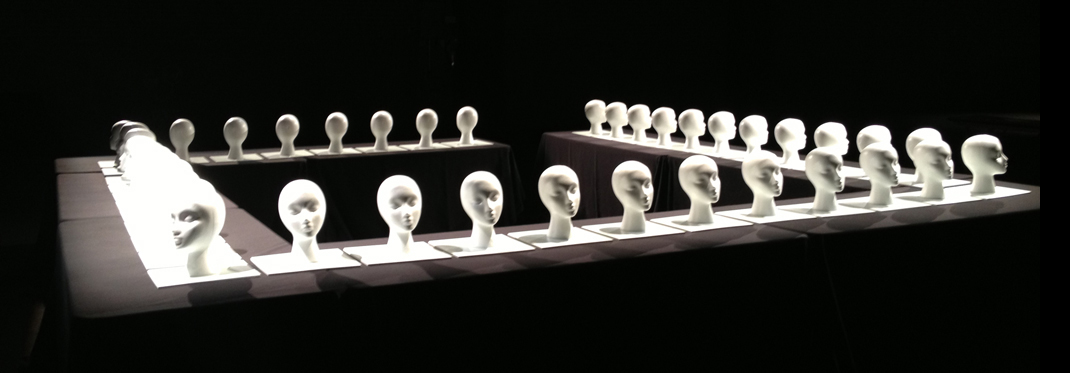EyeWear @ EyeBeam
 Saturday, June 1, 2013 at 2:12PM
Saturday, June 1, 2013 at 2:12PM 

On Wednesday, May 29th we — Christine Perey, Chair of The AR Standards Community Board; Peter Wassell, Founder of Augmate; and myself: Chris Grayson, Minister of Propaganda at Telepathy — staged a 20+ Year retrospective of video eyewear devices at New York City’s preeminent technology arts venue, EyeBeam.
The installation was sponsored by Vuzix, who’s founder Paul Travers donated the largest number of pieces (Qualcomm was also a minor sponsor). Dan Cui provided a large collection of consumer pieces, predominantly from MyVu. Steven Feiner, Professor of Computer Science at Columbia University and Director of their Computer Graphics and User Interface Lab, and Co-Director of the school’s Computer Vision and Graphics Center, also provided a large collection including models from MicroVision, Sony, Liteye and various custom and modified pieces. I myself provided three devices from my own small collection: a later model MicroVision Nomad, an Oculus Rift, and the Telepathy-One design prototype.
NOTE: The installation was such a phenomenal success that Ori Inbar invited us to take it to Santa Clara for AWE 2013 where it was combined with pieces from the collection of Steve Mann, Professor of Electrical and Computer Engineering at the University of Toronto, who was keynoting at AWE. The collection is now traveling to Toronto where it will appear at an IEEE event. Efforts are now underway to put the whole exhibit on the road as a traveling installation.
Shown above is a photo of the set, taken at the moment I completed the build, but before any of the systems were mounted. I had planned to take another of the room with all the units mounted in place but alas, the installation went down to the wire, there were a dozen people milling about when I got the last peice set up and ran to the bathroom to change into a fresh shirt. When I returned to the gallery the doors were open and the room was flooded with attendees. We do have a quick video I snapped with my phone, circling the exhibit, together with clips Danielle took of me talking about two of my three devices (I let Steve speak about my Oculus Rift, as he was much more qualified to do so). I also give brief comment on the videos below.
In the second video above, Steve chimes in on the disappointing lack of success of the MicroVision Nomad, Honda dealership pilot project. He asks what lesson can we learn from this? My answer to Steve is that aesthetics matter, even in the garage. MicroVision clearly thought that, when dealing with auto garage mechanics, design aesthetics didn’t matter; and clearly they were wrong. It isn’t that auto mechanics expect such a “tool” to look like a fashion accessory, it is that the device did not fit with their own aesthetic-of-self. If MicroVision had employed the industrial design of ruggedized tools by DeWalt, or military inspired design such as that created by watch maker Bell & Ross, guys at the garage would have been fighting over who got to wear one. Instead, they went to market with a product with industrial design that looked like a cross between an 80s version of an electronic game toy and a 70s sci-fi movie prop. Fuctionally, it was an exemplary device that solved an explicit workplace problem, yet it was a flop. Design matters.
That same lesson is one that I believe is about to be learned in the mass-market space — cutting edge industrial design is one of the defining characteristics setting Telepathy apart from the crowd.
